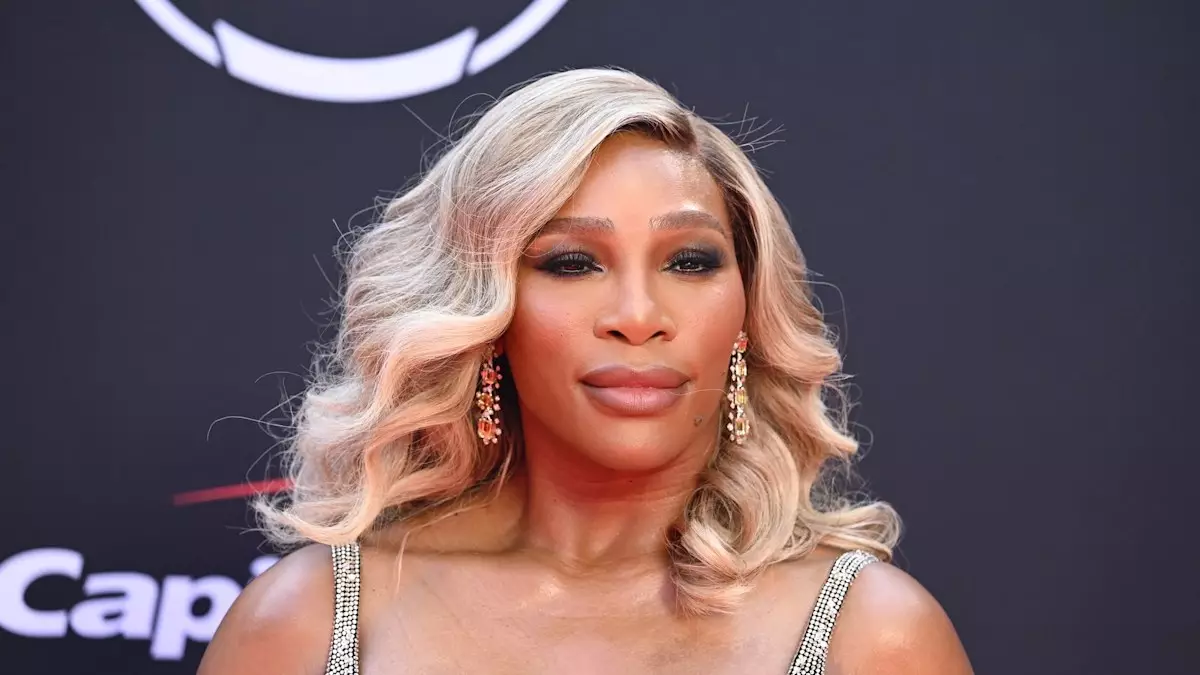In the unpredictable world of celebrity appearances, few moments shine as brightly as when sports legends cross over into the realm of music. Recently, tennis superstar Serena Williams surprised fans and commentators alike with her guest performance during the Super Bowl Halftime Show alongside hip-hop icon Kendrick Lamar. This unexpected union of athletics and entertainment not only showcased Williams’s multifaceted talent but also reignited discussions about cultural expression and the reception of famous figures in popular media.
Serena Williams is no stranger to making headlines, but her role in Kendrick Lamar’s Halftime Show brought a new flavor to her already illustrious career. The tennis legend took to the stage to perform the ‘crip walk’, a classic dance move originally rooted in her hometown of Compton, California. This was more than just a nostalgic throwback; it was an iconic reclamation of a moment from the past. Williams first showcased this dance after her Olympics victory over Maria Sharapova in 2012, a moment that sparked considerable controversy. The choice to re-embrace the crip walk at such a globally recognized event like the Super Bowl speaks volumes about Williams’s resilience and her capacity to turn public scrutiny into a defining cultural statement.
In a behind-the-scenes video shared on Instagram, Williams recounted the exhilarating journey leading up to her performance, expressing disbelief at the impact of the request from Kendrick and his team. “When @kendricklamar and team called… I’m like Super Bowl? Are you serious?” she exclaimed, underlining the magnitude of the occasion. Her playful acknowledgment of her previous Olympic victory and how it had come full circle was both nostalgic and empowering.
The crip walk holds deep cultural significance, particularly as a dance that originated in the streets of Compton. For Williams, her performance was not just about the dance; it was a way to honor her roots while taking a stance against the criticism she faced over a decade ago. The backlash she received in 2012 can be tied to a broader narrative about Black culture misinterpreted and scrutinized by mainstream media, reflecting the larger systemic issues regarding race.
In her quirky comments about how performing the crip walk at Wimbledon would result in a fine, Williams drew a line between different environments in which she interacts with the public. It’s a clear distinction of the freedom to express herself in less formal settings, contrasting the rigidity often found in high-stakes sports events. Her performance, juxtaposed with Kendrick Lamar’s powerful lyrics, offered audiences a layer of authenticity and cultural pride that resonated deeply, highlighting the necessary overlaps between different forms of Black artistry.
The appearance at the Halftime Show held added layers of meaning given Williams’s past engagement with rapper Drake. The two shared a long-rumored romantic history, and their lives have intertwined in various ways, leading to a deeper examination of contemporary relationships within the public eye. Kendrick Lamar’s well-documented rivalry with Drake only adds fuel to this narrative. Notably, Kendrick’s recent diss track aimed at Drake highlights the competitive nature of their relationship and, at times, casts a shadow on the camaraderie within the industry.
In light of this, Williams’ playful quip about Kendrick potentially making Drake “Forrest Gump” during their spats encapsulates how the intersections of sport, music, and personal relationships create an intriguing cultural dynamic. It illustrates how sports figures like Williams navigate multifaceted identities, often having to move between domains that are often viewed as distinct yet are profoundly interconnected.
Ultimately, Williams’s brief but impactful Halftime Show performance serves as a testament to her ability to transcend the boundaries of sport. It exemplifies her understanding of cultural narratives, personal expression, and artistic collaboration. By reclaiming a dance that previously faced societal scrutiny, she stands as a strong advocate for cultural appreciation and authenticity, which is particularly meaningful in today’s climate.
As Williams continues to demonstrate her prowess beyond the tennis court, her involvement in Kendrick Lamar’s Super Bowl performance is set to be remembered as a significant cultural moment—an intersection of sport, music, and identity that encourages reflection on representation in media and the power of public figures to reclaim their own narratives.
